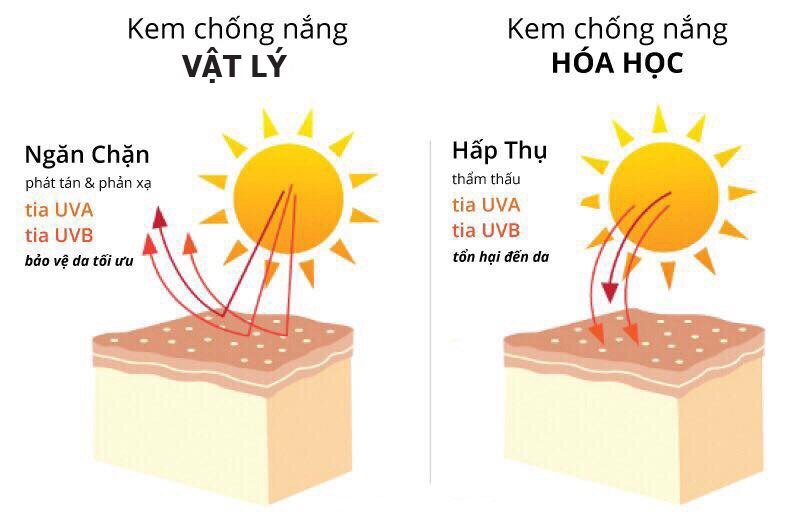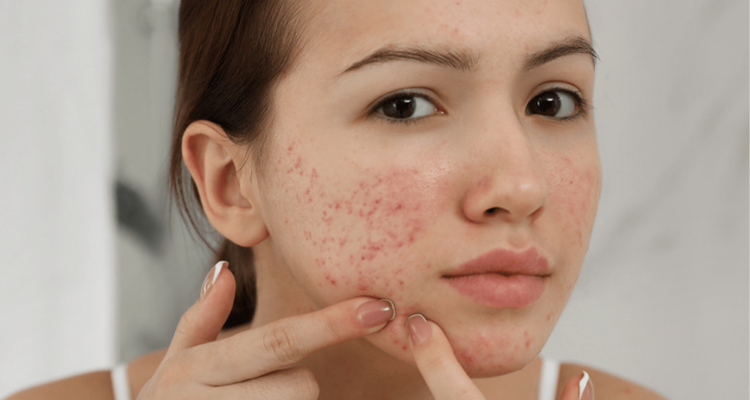1. Physical sunscreen
Physical sunscreen is a type of inorganic sunscreen, usually containing the ingredients titanium dioxide and zinc oxide, of which Titanium dioxide is the main active ingredient. Physical sunscreen has the ability to create a protective barrier for the skin, helping to block and reflect UV rays, preventing them from passing through the skin.
Advantage:
- Effective immediately after applying to the skin without having to wait for a period of time like chemical sunscreens
- Protects skin from UVA and UVB rays
- Causes little skin irritation, suitable for those with sensitive skin or easily irritated skin (hot, red, burning) when exposed to sunlight due to its ability to soothe the skin.
- Forms a durable sun protection layer for a long time
An Therapy Ultra SunBlock Plus SPF50+ sunscreen – Physical sunscreen specialized for oily skin
Broad spectrum sunscreen protects the skin from 3 effects: UV rays, blue light rays and the external environment. Prevents the formation of melasma and freckles, the product helps lift skin tone and does not cause skin irritation.
-Thành phần chính: Ethylhexyl Methoxycinnamate, Titanium Dioxide, Zinc Oxide, Niacinamide, Sodium Hyaluronate, Isoamyl p – Methoxycinnamate, Diethylamino Hydroxybenzoyl Hexyl Benzoate, Chlorphenesin…

2. Chemical sunscreen
Chemical sunscreen is an organic sunscreen with the following main ingredients: avobenzone, oxybenzone, sulisobenzone, etc. Chemical sunscreen acts as a chemical filter, protecting the skin from UV rays by absorbing , processes and decomposes these rays before they can damage the skin. Chemical sunscreens often have a thin, light texture, are colorless, odorless and are rated higher than physical sunscreens in terms of their ability to protect against UV rays.
Advantage:
- Chemical sunscreen has a thin, light, non-greasy texture so it is easy to apply evenly on the skin and less likely to clog pores, making it convenient for daily use.
- Does not leave white streaks on the skin, absorbs easily into the skin and does not make the skin oily.
- The amount of cream that must be used is less than with physical sunscreen
- Chemical sunscreen easily matches skin tone and can also be used as a makeup base.
- Chemical sunscreens come in many types with different SPF indices and are also water resistant, suitable for the diverse needs of customers.
- The formula is easy to add treatment ingredients such as peptides and enzymes and other skin care ingredients
3. Should I choose physical sunscreen or chemical sunscreen?
Choosing between physical and chemical sunscreen depends on many factors, including your skin type, outdoor activities, and personal preference. Here are some strengths and weaknesses of both sunscreens:
Physical sunscreen (mineral sunscreen):
- Use mineral ingredients such as zinc oxide or titanium dioxide to create a physical layer that protects the skin from the effects of UV rays by reflecting them.
- Suitable for sensitive or oily skin, as they are usually less irritating and do not penetrate deeply into the skin.
- Can be used immediately after applying to the skin, no need to wait for a period of time like chemical sunscreens.
Chemical sunscreen:
- Uses chemical compounds to absorb and convert the impact of UV rays on the skin into heat, which is then emitted from the skin.
- May be effective in protecting the skin from the effects of UV-A and UV-B rays.
- Easy to spread and absorbs quickly into the skin, suitable for makeup afterwards.
Choosing between physical and chemical sunscreen depends on personal preference and how it feels on your skin. Some people may prefer physical sunscreens because they cause less skin irritation, while others may prefer the ease of application of chemical sunscreens.
Most importantly, always use sunscreen when exposed to the sun and reapply as directed, no matter what type you use. Protecting the skin from the effects of UV rays is important to prevent skin darkening, melasma, and protect the skin from damage from the sun.








